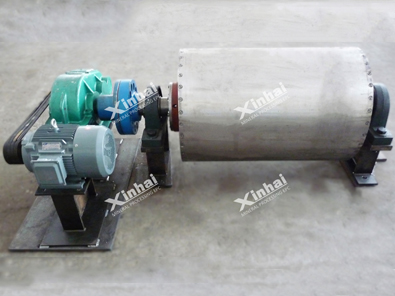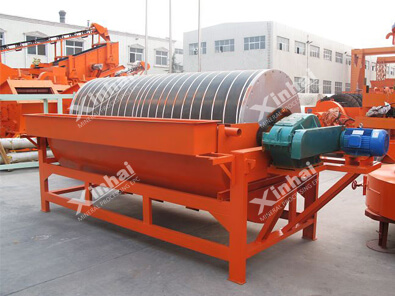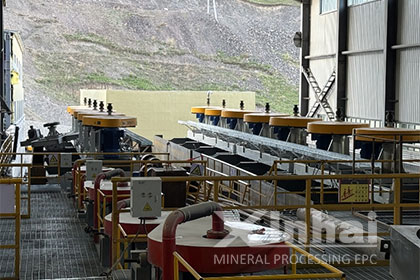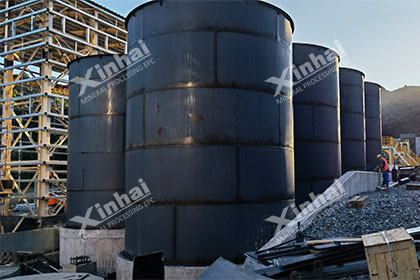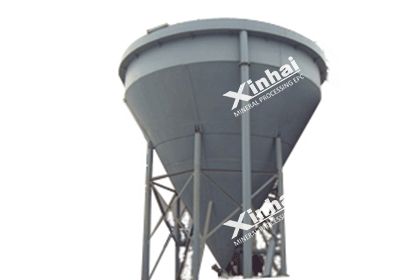Ultimate Guide for Magnetic Separation Method
 Essow
Essow
 Apr 26, 2022
Apr 26, 2022
 4154
4154
If you want to know more details about equipment, solutions, etc, please click the button below for free consultation, or leave your requirements!
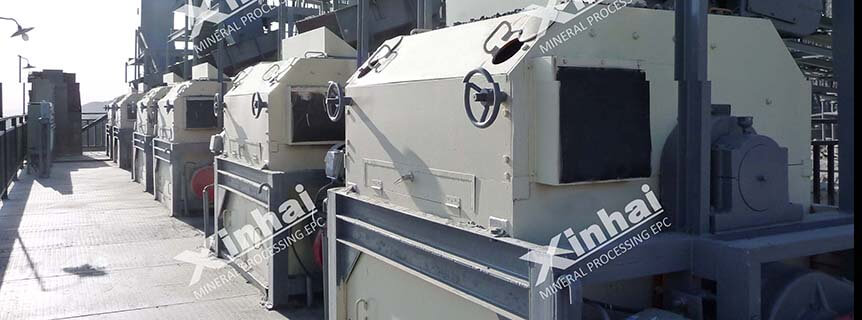
Magnetic
separation is a commonly used beneficiation method. It is a
beneficiation method that uses the magnetic difference between minerals
to separate different minerals in a non-uniform magnetic field. Magnetic
separation is simple and convenient, does not generate additional
pollution, and is widely used.
Below we will give a comprehensive introduction to magnetic separation.
01 The Principle of Magnetic Separation
BackMagnetic separation is carried out in the non-uniform magnetic field provided by the magnetic separation equipment. After the ore enters the separation space of the magnetic separation equipment, it moves along different paths under the combined action of magnetic force and mechanical force (including gravity, centrifugal force, fluid resistance, etc.) and we can intercept the ore pulp separately to obtain different products.
The essence of magnetic separation is realized by the different effects of magnetic force and mechanical force on different magnetic particles. The ore entering the magnetic separator will be divided into two or more products. In actual separation, it is impossible for magnetic ores and non-magnetic ores to completely enter into the corresponding magnetic products, non-magnetic products, and middlings, but rather random.
Therefore, the effect of the magnetic separation process can be expressed by the recovery rate, grade, the ratio of the magnetic substance in the magnetic product to the magnetic substance in the feed, and the content of the magnetic substance in the magnetic product.
(Principle of Magnetic Sepration)
02 Ores Suitable for Magnetic Separation
Back#1 Iron Ore
Magnetic separation is the main beneficiation method for iron ore processing. After the beneficiation of iron ore, the grade is improved, and the content of silica and harmful impurities is reduced, which is beneficial to the smelting process.
We have an article about 5 iron ore beneficiation process, click the link to check it.
#2 Non-Ferrous and Rare Metal Minerals
Many non-ferrous and rare metal minerals have different magnetic properties. When the final concentrate cannot be obtained by gravity separation and flotation, magnetic separation can be combined with other methods for separation.
For example, the wolframite rough concentrate obtained by gravity separation contains a certain amount of cassiterite. Taking advantage of the weak magnetic property of wolframite and the non-magnetic property of cassiterite, we can treat them by magnetic separation and get qualified tungsten concentrate.
We have an article about the beneficiation process of tungsten ore, click the link to check it.
#3 Weighted Material
Magnetite powder or ferrosilicon is often used as the weighted material in the heavy medium coal or ore beneficiation. Since the suspension as the heavy medium needs to be recycled, the magnetic separation method needs to be used to recover and purify the weighted material.
#4 Non-Metallic Minerals
Non-metallic raw materials generally contain harmful iron impurities, and magnetic separation has become one of the important operations in non-metallic beneficiation.
For example, when the iron content of kaolin is high, the whiteness, refractoriness, and insulation of kaolin will decrease, which will seriously affect the quality of products. The most effective method for iron removal from kaolin is high gradient magnetic separation.
For the beneficiation of kyanite, tourmaline, feldspar, quartz, nepheline, and diorite, dry magnetic separation has been used for a long time.
We have an article about the beneficiation process of kaolin, click the link to check it.
#5 Raw Ore Pretreatment
The raw ore entering the concentrator or coal preparation plant is often mixed with iron that was brought in during mining. To protect the crusher and other equipment, it is necessary to use magnetic separation to remove iron before the bulk materials are broken.
03 Magnetic Properties of Minerals
BackGenerally, all minerals are divided into strong magnetic minerals, weak magnetic minerals, and non-magnetic minerals according to the specific magnetic susceptibility.
#1 Strong Magnetic Minerals
Strong magnetic minerals have specific magnetic susceptibility x>3000×10-9m3/kg, which can be recovered in weak magnetic field magnetic separator with a magnetic field strength of 80~136kA/m.
Such minerals mainly include magnetite, maghemite, titanomagnetite, pyrrhotite and zinc-iron spinel, etc. Most of these minerals belong to ferrimagnetic substances.
#2 Weak Magnetic Minerals
The specific magnetic susceptibility of weak magnetic minerals is x=1. 26X 10-6~7. 5X10-6 m3/kg, which can be separated in the magnetic separator with magnetic field strength H= 480-1840 kA/m.
There are many such minerals, such as:
Most ferromanganese minerals: hematite, mirror iron ore, siderite, limonite, hydromanganite, hard manganese, pyrolusite, rhodochrosite, etc.
Some minerals that contain titanium, chromium, and tungsten: are ilmenite, rutile, chromite, wolframite, etc.
Some rock-forming minerals: biotite, amphibole, chlorite, epidote, garnet, olivine, pyroxene, etc.
Most of these ores belong to paramagnetic materials, and some belong to antiferromagnetic materials.
#3 Non-Magnetic Minerals
The specific magnetic susceptibility of non-magnetic minerals x<1.26×10-7m3/kg, is a kind of mineral that cannot be recovered by magnetic separation at present.
There are many such minerals, such as:
Some metallic minerals: molybdenite, sphalerite, galena, stibnite, scheelite, cassiterite, red arsenic nickel ore, gold, etc.
Most non-metallic minerals: coal, natural sulfur, diamond, kaolin, gypsum, fluorite, etc.
Most rock-forming minerals: quartz, feldspar, calcite, etc.
Some of these minerals are paramagnetic, and some are diamagnetic, such as galena, gold, stibnite, natural sulfur, etc.
04 Magnetic Separation Equipment
BackThe structure of the magnetic separator is various, and there are many classification methods. Usually classified according to the following characteristics:
#1 According to Bearing Media
According to the different bearing media, the magnetic separator can be divided into two types: dry type and wet type:
(1) Dry Magnetic Separator - carried out in the air, it is mainly used to separate large and coarse strong magnetic and fine weak magnetic ores.
(2) Wet magnetic separator
– carried out in the water or magnetic liquid, it is mainly used to
separate fine-grained strong magnetic and fine-grained weak magnetic
ores.
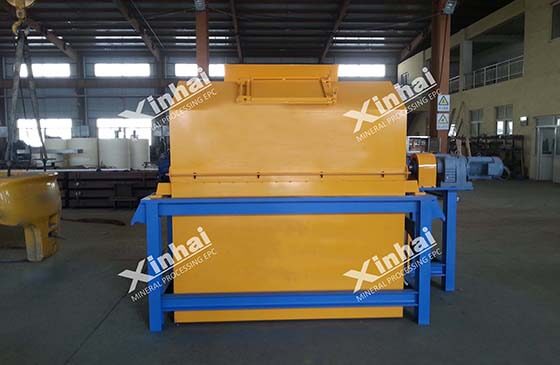
(Dry Magnetic Separator)
#2 According to the Magnetic Field Strength
According to the magnetic field strength of the magnetic separator, the magnetic separator is divided into two categories: weak magnetic field magnetic separator and strong magnetic field magnetic separator:
(1) Weak magnetic field magnetic separator - the magnetic field strength H0 on the surface of the magnetic pole is 80~120 kA/m, and the magnetic field force (HgradH)n is (3~6) X 105 kA2/m3, which is used for the separation of strong magnetic minerals and gangue minerals.
(2) Strong magnetic field magnetic separator - the magnetic field strength H0 on the surface of the magnetic pole is 800~1600 kA/m, and the magnetic field force (HgradII) n is (3~12) X 107 kA2/m3, which is used for the separation of weak magnetic minerals and gangue minerals.
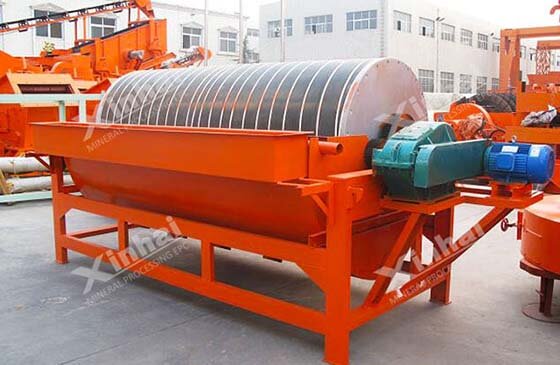
(Weak Magnetic Field Magnetic Separator)
We have an article about 6 kinds of magnetic seapration equipment, click the link to check it.
To Wrap Up
The above is the ultimate guide to the magnetic separation process, hoping to help you choose the appropriate beneficiation process and equipment.
If you have a certain mine and are not sure what process and equipment should be used to select, please leave a message below, or directly consult online customer service, and we will choose the most suitable ones for you.
 +86 183 3575 8886
+86 183 3575 8886 pinklaurabao@gmail.com
pinklaurabao@gmail.com




 Message
Message Chat Now
Chat Now


